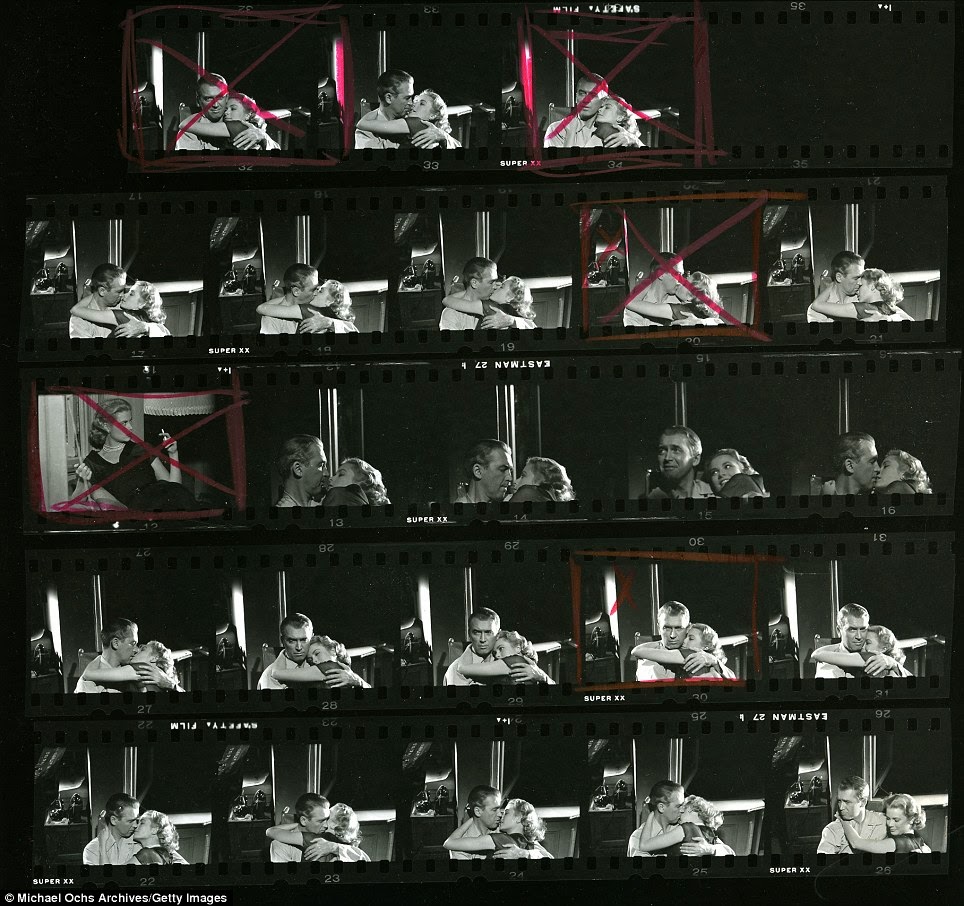Hollywood Frame By Frame: The Unseen Silver Screen in Contact Sheets, 1951-1997
Between my digital camera and my camera phone I probably take way too many photos. For about every ten photos I take, usually only one of them is any good, but because I can preview the photos before I print them I can be sure I'm printing only the photos I really want. In Hollywood, in the era prior to digital photography, set photographers didn't have this luxury. Instead the photographers printed contact sheets - a printed reproduction of one or more strips of developed film - which allowed photographers to view many different shots on one sheet. The photographers or studio publicity department could then preview the photos in order to select the best ones to serve their purpose.
In the new book Hollywood Frame By Frame: The Unseen Silver Screen in Contact Sheets, 1951-1997, author Karina Longworth presents contact sheets from Hollywood's past containing many never before seen images of Hollywood's biggest stars. James Dean, Elizabeth Taylor, Marlon Brando, Chaplin, Judy Garland, Frank Sinatra, and Faye Dunaway are just some of the many stars that are featured. These contact sheets allow us to see not just the photos that made the cut for some publicity photo, but all the images that for whatever reason were passed over. These images are often more interesting than the chosen photos. In some images we see stars caught in a spontaneous moment. In others we get interesting glimpses behind the scenes of the filmmaking process.
Click images to see larger.
A contact sheet showing Audrey Hepburn on the set of Breakfast at Tiffany's.
For each film, the book includes interesting anecdotes about the stars featured in the contact sheets and some background information. In the contact sheet for Sabrina (1954) featuring Audrey Hepburn, I learned that this film marked the beginning of Audrey Hepburn's "long run as muse and model for French fashion designer Hubert de Givenchy." The director of the film, Billy Wilder, convinced studio Paramount to pay for Hepburn to fly to Paris and purchase garments from Givenchy to be worn in the film. When Hepburn arrived at Givenchy's studio, the designer was expecting the other Hepburn - Katharine - but Givenchy allowed her to go through his closets and select what she liked. And everyone knows how that turned out.
Marilyn Monroe in a contact sheet for Bus Stop (1956).
Another tid bit I learned was from an anecdote for Raintree County (1957) involving Elizabeth Taylor and Montgomery Clift. I already knew that it was during the making of this film that Clift was involved in a major car accident that disfigured his perfect face and would delay and complicate the rest of the film. What I didn't know were some of the gross details. Clift was leaving a party at Taylor's house when he crashed his car into a telephone pole and his face was torn away. According to the book, Clift's friend and fellow actor Kevin McCarthy, "who had been driving his own car ahead of Clift's, ran back to Taylor's house for help, and the actress rushed to Clift's side, sticking her fingers down her best friend's throat to retrieve the two front teeth which had been knocked out by the crash."
James Stewart and Grace Kelly in a contact sheet from Rear Window (1954).
What's amazing is that we have many of these images at all. For a long period contact sheets were trashed once a movie was released. The studios didn't see any purpose in keeping them. This hardcover book is 208 pages, filled with gorgeous black and white images and a couple of attractive color images. I highly recommend it for classic film or photography fans who enjoy a nice coffee table style book. Might make for a great gift for the classic film fan on your gift list.
Special thanks to Princeton Architectural Press for a review copy of this book.




No comments:
Post a Comment